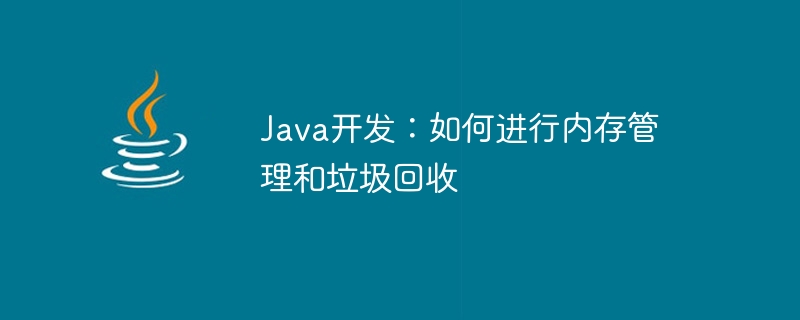

Java development: How to perform memory management and garbage collection, specific code examples are needed
Introduction:
In Java development, memory management and garbage collection are very important Important topics. Good memory management and garbage collection mechanisms can ensure the performance and stability of application operations. This article will introduce how to perform Java memory management and garbage collection, including memory allocation, memory leaks, garbage collection algorithms, and specific code examples.
1. Memory allocation
In Java, memory allocation is completed automatically, and developers do not need to manually allocate and release memory. When an object is created, the Java Virtual Machine (JVM) automatically allocates memory space and automatically releases the memory space when the object is no longer referenced. This is one of the advantages of Java and one of the reasons why Java is widely used.
2. Memory Leak
Memory leak means that the application cannot release the allocated memory normally, causing the memory usage to continue to increase and eventually causing the application to crash. In Java, memory leaks may be caused by the following reasons:
3. Garbage collection algorithm
There are two main Java garbage collection algorithms: mark-clear algorithm and copy algorithm.
4. Code example
public class MemoryAllocationExample {
public static void main(String[] args) {
String str1 = new String("Hello");
String str2 = new String("World");
System.out.println(str1);
System.out.println(str2);
}
}In this example, we use the constructor of the String object to create When two objects are created, the JVM will automatically allocate memory space to these two objects and automatically release the memory space when no longer in use.
public class MemoryLeakExample {
private static List<Object> list = new ArrayList<>();
public static void main(String[] args) {
for (int i = 0; i < 1000000; i++) {
Object obj = new Object();
list.add(obj);
}
}
}In this example, we use a static List object to save the created Object object. Because Object objects are not deleted from the List at the appropriate time, these objects will exist in memory for a long time, resulting in memory leaks.
Summary:
This article introduces memory management and garbage collection in Java development, including memory allocation, memory leaks, garbage collection algorithms and related code examples. In Java development, good memory management and garbage collection are key to ensuring application performance and stability. By learning and understanding these concepts and techniques, we can better optimize the memory usage of Java applications and reduce the risk of memory leaks.
The above is the detailed content of Java development: how to perform memory management and garbage collection. For more information, please follow other related articles on the PHP Chinese website!
 How to be invisible online on TikTok
How to be invisible online on TikTok
 How to shut down after running the nohup command
How to shut down after running the nohup command
 How to remove the border of the text box
How to remove the border of the text box
 How to define strings in php
How to define strings in php
 How to enter the 404 website
How to enter the 404 website
 What is star network topology?
What is star network topology?
 The difference between concat and push in JS
The difference between concat and push in JS
 How to learn python programming from scratch
How to learn python programming from scratch




